|
Special education teachers are more likely to depart than any other group of teachers. Studies have demonstrated that an average of 13.2% of us leave the job each year.
The job of a Special Education Teacher can be overwhelming. Trust me - sometimes I feel like I had an IEP written just for me with a team that supports my needs and goals... But since that's not going to happen, the only way to not become a statistic is to start your year organized to stay organized for a successful year! Take these steps during the first few days of the school year as a Special Education Teacher for stress free year!
Some teachers prefer printing out a hard copy of the IEP while others prefer downloading it as a file to save in their documents and some like to just view it directly from the database. You decide whatever works best for you because that is all that really matters in the end!
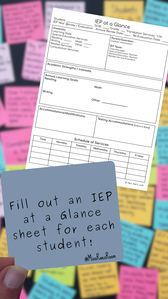
An IEP at a Glance is an abbreviated document that provides a quick reference to a student's IEP.
It allows for quick reference of ... *goals/objectives *strengths *accommodations *modifications *instructional services *specially designed instructions Create these at the beginning of the year and pass them out to all staff who work with your students! Read more about how I create my IEP at a Glance sheets HERE!
Now, take another minute to think of yourself as a child. Think of the teenage you. And now, think of the adult you. Have you changed over the years? Of course you have! We all change, and our students change too. They change developmentally. They change from their experiences. And they change from their interactions with others, including you, as their teacher!
A student’s IEP should report the facts about a student. No one’s interpretation nor opinion should sway the IEP. But we are human, and this does happen. Plus, we never know how the previous student and teacher relationship influenced a student’s progress. So because change is normal, because data can be subjective, and because everyone should be given a second chance, on your first read of the IEP, just read it for the facts. After years working in an urban school district therapeutic middle school classroom setting for students with emotional and mental health challenges, I transitioned into an inclusion classroom in the suburbs. It was a second grade classroom of possibly the nicest children I thought I had ever encountered! The general education teacher that I co-taught with would often tell me things like, “You can discipline them you know” or “It’s okay to raise your voice once and awhile.” And every time she would say things like this, I would think, “What for? These kids are great! They say words like ‘please’ and ‘thank you’. None of their sentences ever include a swear word, and they don’t even know what having an attitude is.” It felt like I had died and gone to teaching heaven. Then, in October, we got word we were getting a new student who our Assistant Principal said looked like a “heavy hitter.” Ugh! The good times are over! A very think IEP was in my mailbox the next morning. I read through it immediately. It told the tale of a boy who was deaf in one ear and extremely violent. The narrative spoke of desks being thrown at teachers, students being attacked, and constant work refusal. When this boy entered our classroom on the first day, I was immediately terrified. His history looked like any other that I had previously worked with, but this second grader towered over me and was easily three times as strong as me! Are you expecting me to tell the story of how we built a strong relationship and as a result, he never demonstrated any of these behaviors? Well, I’m not going to tell you that story. He just never showed any of those behaviors. He was homeless, living in a shelter, during most of the time that he was with us, and he still never even showed a symptom of trauma. We did form a good bond, but I cannot take credit for him acting as a role model student. He was a great kid, affable, polite, and a hard worker. He never showed a drop of anger or violence. We re-wrote the IEP, and as a result, his story was re-written. But he did that by himself. As a result of that experience, I don’t even read any of the narrative portions, including the current performance on the IEP so I am not persuaded - or jaded - by others’ views. I want to meet a student as he/she is. I want to give the student a chance to show me who they are and who they will be for me! Because every child should be given the chance to be who they want to be! Just like you don’t judge a book by it’s cover, don’t judge a student on the opinion of other teachers! After the first week, I complete the close reading strategy. I read students’ IEPs for comprehension of the full text. I read them to fully understand the main idea and key details. At this point, I know the student well enough to not let their previous story change my view of them. While reading student IEPs, review their goals. You will get a better sense of them as you create IEP at a Glance sheets, which we will discuss next, and again, as you match progress monitoring assessments to them, which we will discuss later. On your first of the IEP, just read through them to get a general sense of what your instruction will need to look like during the year. For example, if you are reading a number of decoding goals, you will know that your instruction will need to be phonics heavy! You can read more about how I write IEP goals HERE!
If you are not expected to schedule these meetings, you should still mark the date on your calendar. As the student’s Special Education case manager or liaison, it is your responsibility to alert your school’s Special Education coordinator or IEP team chair if the date is approaching and you have not received a confirmation of the meeting date yet. It will also be your responsibility to attend the meeting and update the IEP, including the IEP goals. In terms of the three year re-evaluation, most districts do not have the Special Education Teacher schedule and chair these meetings. Instead, your school’s Special Education coordinator or IEP team chair will most likely obtain consent for testing as well as schedule and chair the meeting. However, again, as the case manager or liaison, it is your responsibility to alert your school’s Special Education coordinator or IEP team chair if the date is approaching and you have not received a confirmation of the meeting date yet. Typically, an IEP’s expiration date coincides with the annual review date. However, you should double check this when reviewing IEPs. If an IEP expires prior to the annual review date, you should make note of the expiration date on your calendar. This is because regardless of the annual review date, the IEP team will need to meet before the IEP expires. 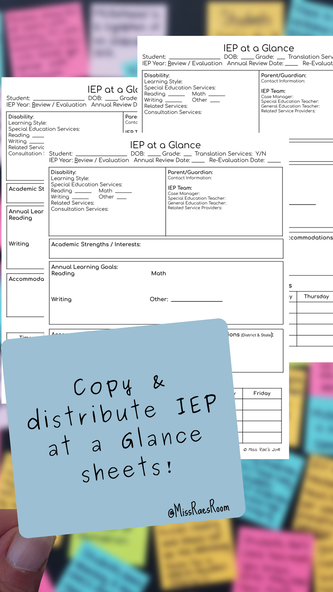
Next...
Copy the IEP at a Glance sheets and... Provide one copy of IEP at a Glances and student IEPs to all staff providing services to the student Ask staff members to sign off on the date that the IEP was received. The IEP is a legal document, and each teacher working with a student on an IEP has the responsibility for understanding required IEP classroom modifications and accommodations. If all teachers have access to the IEP through the database, I save some precious resources - paper and time! I only give teachers the IEP at a Glance with the understanding - or note - that they will look at the full IEP in the school’s online database. Staff members such as Physical Education and music teachers should be aware of classroom modifications and accommodations as well as medical needs, behavior intervention plans and more.
Classroom teachers have a bit more involvement in the IEP process. Therefore, their responsibilities include familiarity with the student's IEP, implementation of PLEP A modifications and accommodations, adherence to confidentiality regulations, consultation with specialist(s) such as Occupational Therapists or Speech and Language Pathologists, attendance at Team meetings, and participation in the development of the IEP.
After each IEP meeting, a new IEP will be proposed, once the proposed IEP is signed, it becomes the active IEP. Once we have an active IEP, distribute the new IEP to all teachers and ask them to sign and date that they have received it. I also give them a copy of the new IEP at a Glance as well.
Here’s how each section of my binder is typically organized:
-IEP at a Glance -Communication log -Progress monitoring data I like to use plastic pocket dividers for each student’s tabbed section. In this way, I can keep any notes, etc. in the pockets. However, as caseloads sometimes grow over the years, it has become more efficient to have the sections organized by assessments. So when my Google Calendar alerts me that I need to test math fact fluency, I can quickly flip to the section containing the sight word assessments and tracking forms for that probe. I also keep reference sheets in my binder for easy access. For example, I always keep a reference page that correlates reading levels to lexile levels. I keep the DIBELS' grade level correlation chart as well. Some data needs to be tracked more frequently. For example, lagging skills in executive functioning, behavior, attention, and social emotional capacities often needs to be tracked within a 30 minute time period or during one subject area. The binder can become too cumbersome when to employ for frequent data tracking. Often times, I clip my forms to clipboards for easy access. The forms I use can be copied onto cardstock and cut smaller to be placed on a key rings for easy access as well. If I have access to an iPad or tablet, I use Google Forms. You can make a simple form that enables you to just hit a button each time the data needs to be recorded. Google Forms will save the data, and when needed, Google Forms will compile the data into one spreadsheet for analysis when it’s needed. And there you have it! Your data is tracked! Now, you can continue on with just being a teaching rockstar and start to plan for the first few weeks of school! You can learn more about my binders HERE!
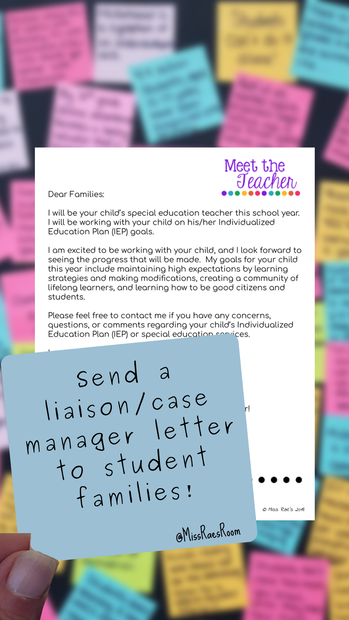
Send a liaison/case manager letter to student families (Hi! I will be your child’s IEP case manager)
Send an introduction letter to all families of students on your caseload. This letter should explain your role as the student’s liaison: “I will be your child’s special education teacher this school year. I will be working with your child on his/her Individualized Education Plan (IEP) goals.” Similar to building positive relationships with your students, you want to get off on the right foot with your students’ families. You also want to infuse your teaching philosophy into your letter in order to help families understand your teaching style and the goals you have for their children: “I am excited to be working with your child, and I look forward to seeing the progress that will be made. My goals for your child this year include maintaining high expectations by learning strategies and making modifications, creating a community of lifelong learners, and learning how to be good citizens and students.” Let your families know you are always available for them as well as their children, and give them the best ways to reach you such as email or your direct phone number at school: “Please feel free to contact me if you have any concerns, questions, or comments regarding your child’s Individualized Education Plan (IEP) or special education services. I can be reached via…” Lastly, set a goal in the form of a call to action for your families: “Let’s work together to make this a successful year!” If you send these immediately, you may not know the times that students’ services are scheduled yet, but if you wait to send this until the second week of school, you could also include a schedule of their IEP services. Oftentimes, related service providers send their own letters with the days and times that they will see a child; however, families may appreciate having this listed all in one place! “Your child’s services have been scheduled as follows: Monday - Speech 9:30-10:00, Reading 1:00-1:45 Tuesday - Reading 1:00-1:45 Wednesday - Speech 9:30-10:00, Reading 1:00-1:45 Thursday - Reading 1:00-1:45 Friday - Reading 1:00-1:45” And don’t forget to have the letter translated into families’ home language! Grab a FREE Special Education Teacher Welcome Letter HERE! Now, here is the rewarding part! These are the reasons that you will cite for staying in the role of a Special Education Teacher!
You can grab all of the forms in the images in my Special Education Teacher Binder by clicking HERE!
And that's it! You have built a strong foundation for a successful year as a Special Education Teacher! Happy & Healthy Teaching! PEACE, Miss Rae References: Ingersoll, R. (2001). Teacher turnover, teacher shortages, and the organization of schools. Seattle: University of Washington, Center for the Study of Teaching and Policy. Plash, S., & Piotrowski, C. (2006). Retention issues: A study of Alabama special education teachers. Education, 127, 125-128. Click HERE to learn how to tackle this list!
1 Comment
8/9/2018 0 Comments How to Create an IEP at a Glance: A Step-by-Step Guide for Special Education Teachers
An IEP at a Glance is an abbreviated document that provides a quick reference to a student's IEP.
It allows for quick reference of ... *goals/objectives *strengths *accommodations *modifications *instructional services *specially designed instructions You can create these at the beginning of the year and pass them out to all staff who work with your students!
Check out below to see how I complete my IEP at a Glance sheets!
Click HERE to grab this IEP at a Glance for FREE!Click HERE to grab this related resource too!
Grab both of these resources PLUS MORE in...
The BEST Special Education Teacher Binder * * EDITABLE * FREE updates for life * * |
CategoriesAll 504 Academic Testing Academic Testing Reports Achievement Testing Reports Back To School B/d Reversals Coronavirus COVID-19 Discrepancy Model Distance Learning Distance Learning With LD ELL Emotional Disability Executive Functioning Extended School Year First Year Special Education Teacher Advice Fluid Reasoning FREEBIES Goal Tracking IEP IEP At A Glance IEP Goals IEP Meetings Learning Disability Oral Reading Fluency Positive Affirmations For Special Education Students Progress Monitoring Reading Remote Learning RTI Rubrics Running Records SEL For Learning Disabilities Social Emotional Learning Special Ed Teacher Interview Questions Special Ed Teacher Job Description Special Education Special Education Progress Reports Special Education Reading Special Education Reading Programs Special Education Students Special Education Teachers Special Education Teachers Positive Affirmations Special Education Teacher Tips Special Education Websites Specially Designed Reading Instruction Teaching Strategy Trauma Wilson Reading Wilson Reading IEP Goals Writer's Workshop |
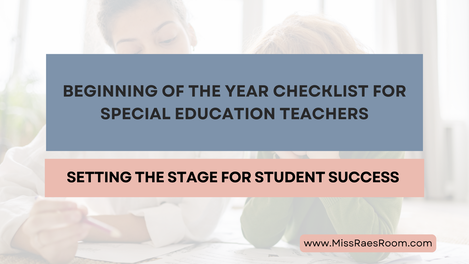
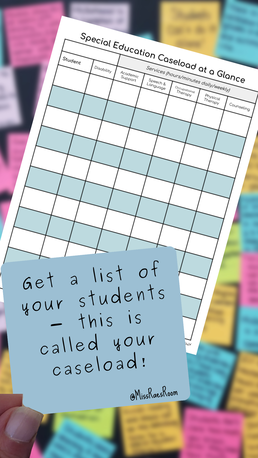
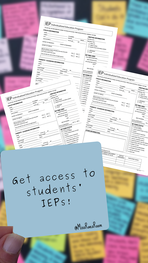
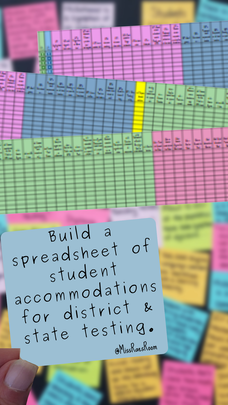
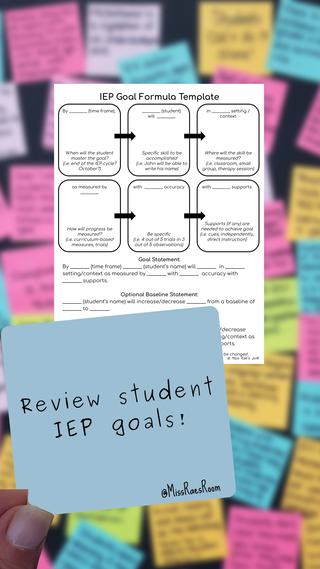
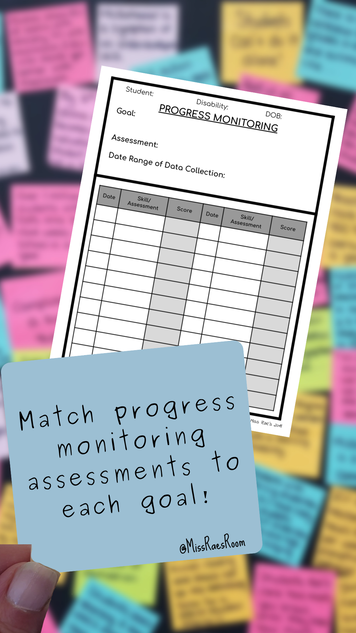
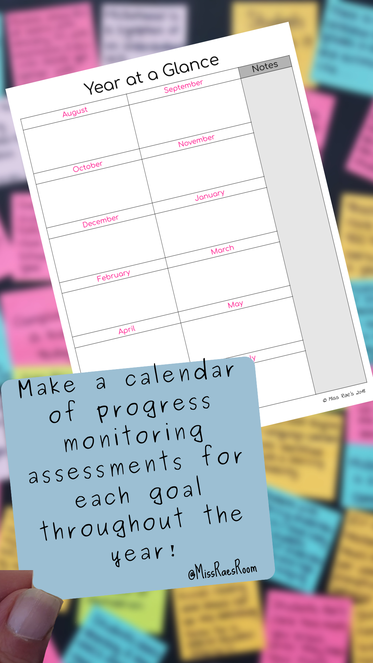
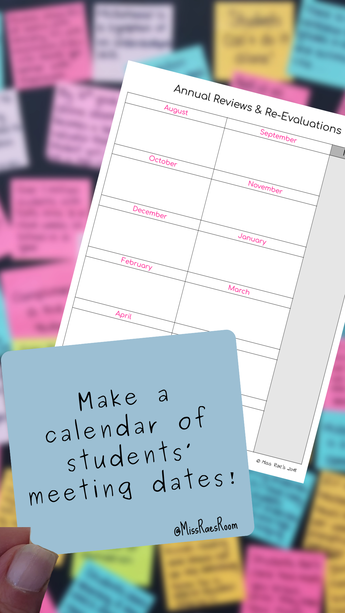
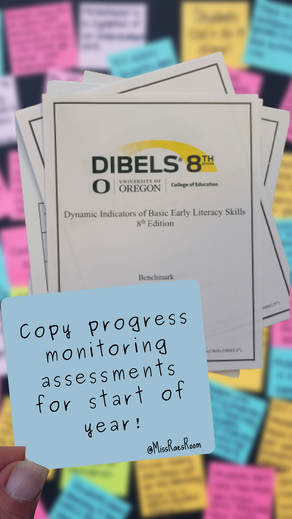
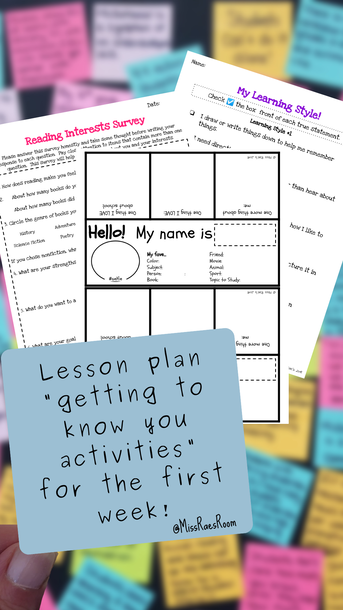
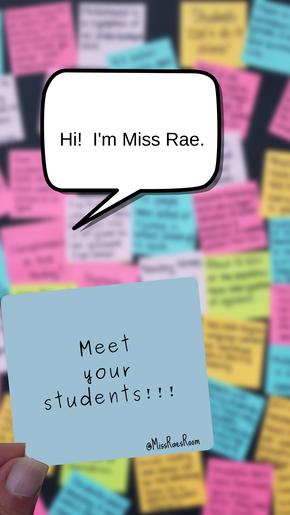
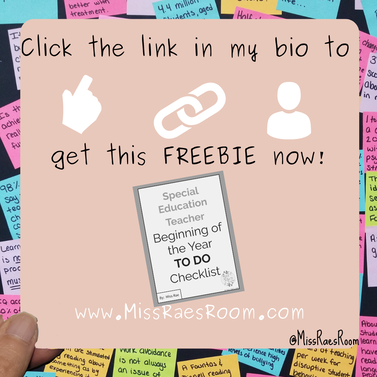
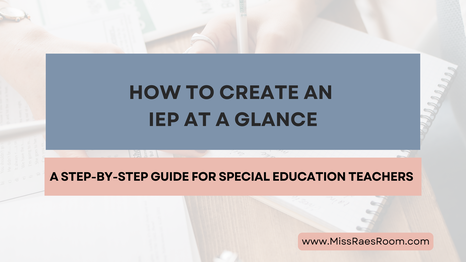
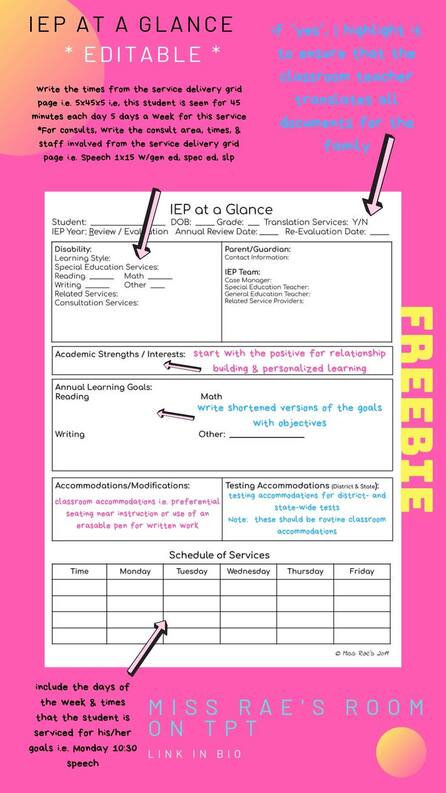
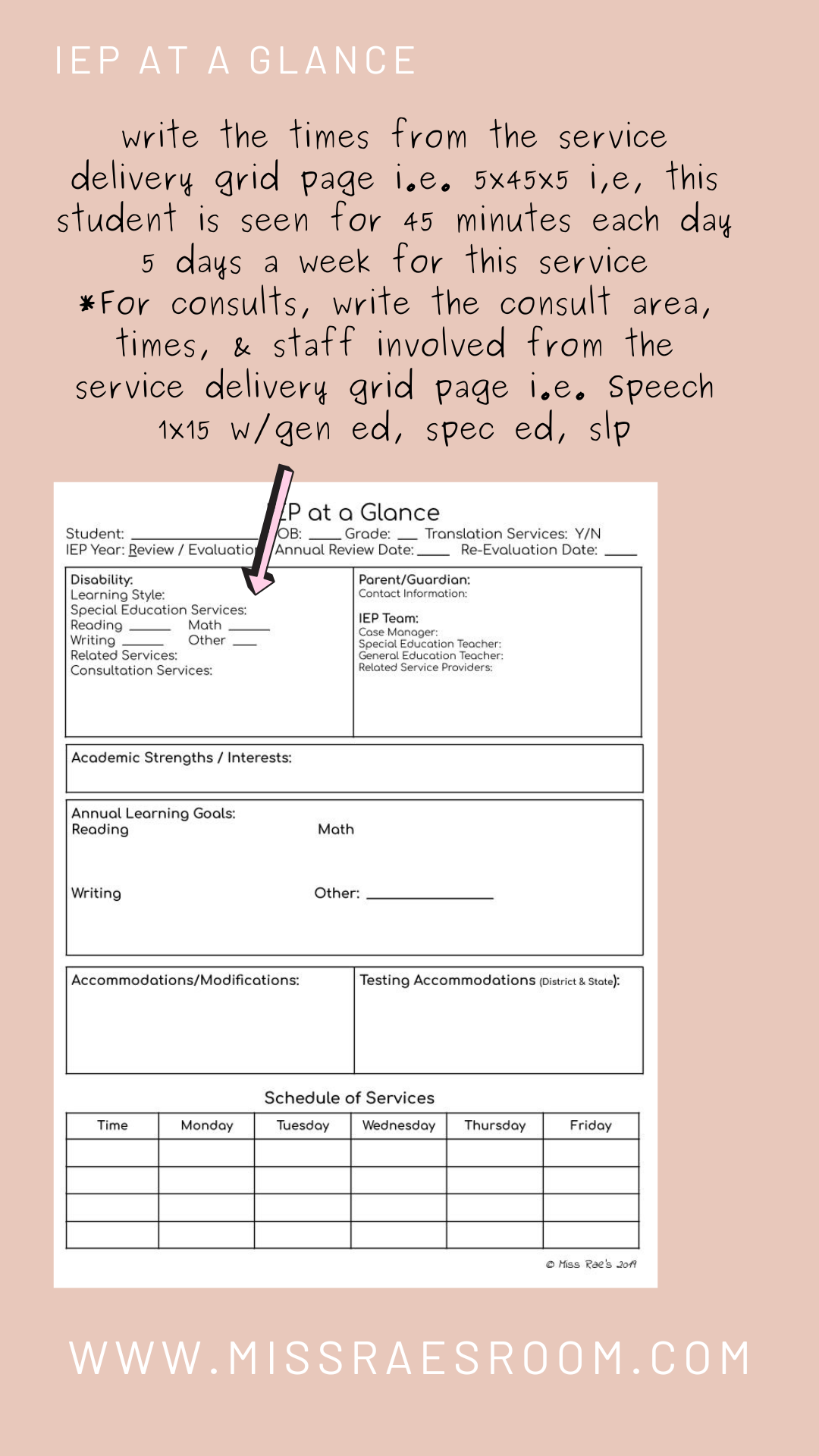
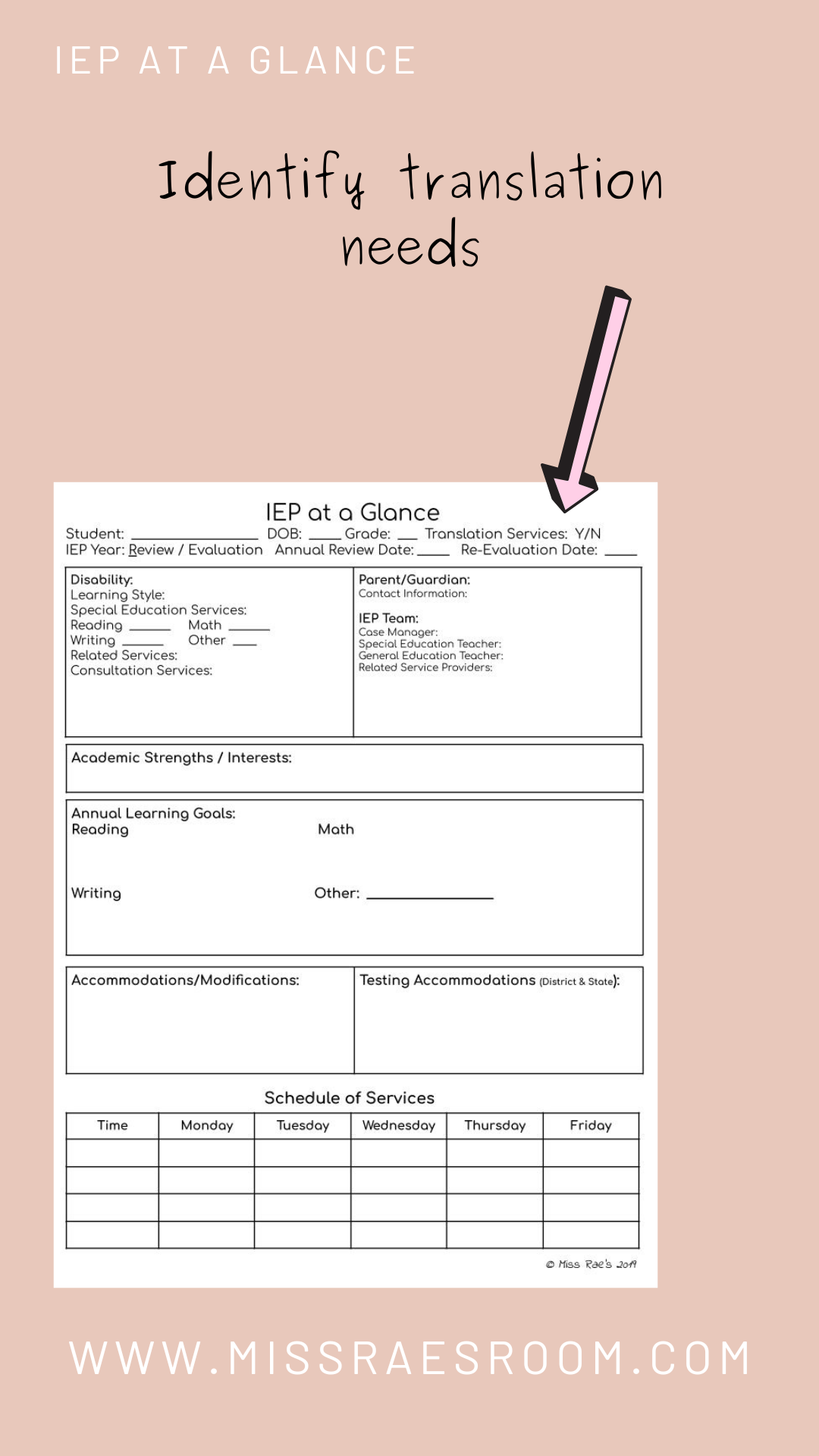
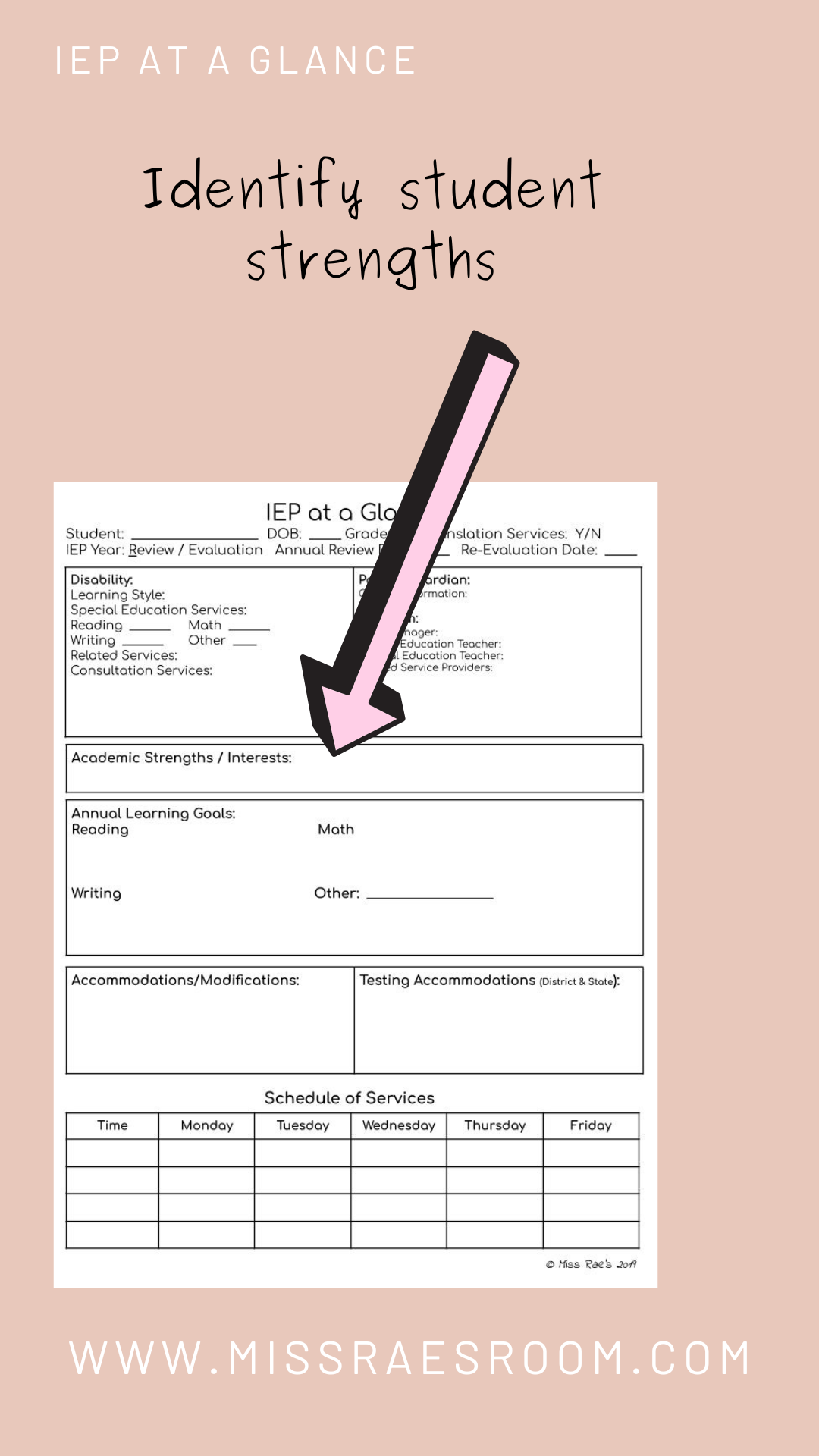
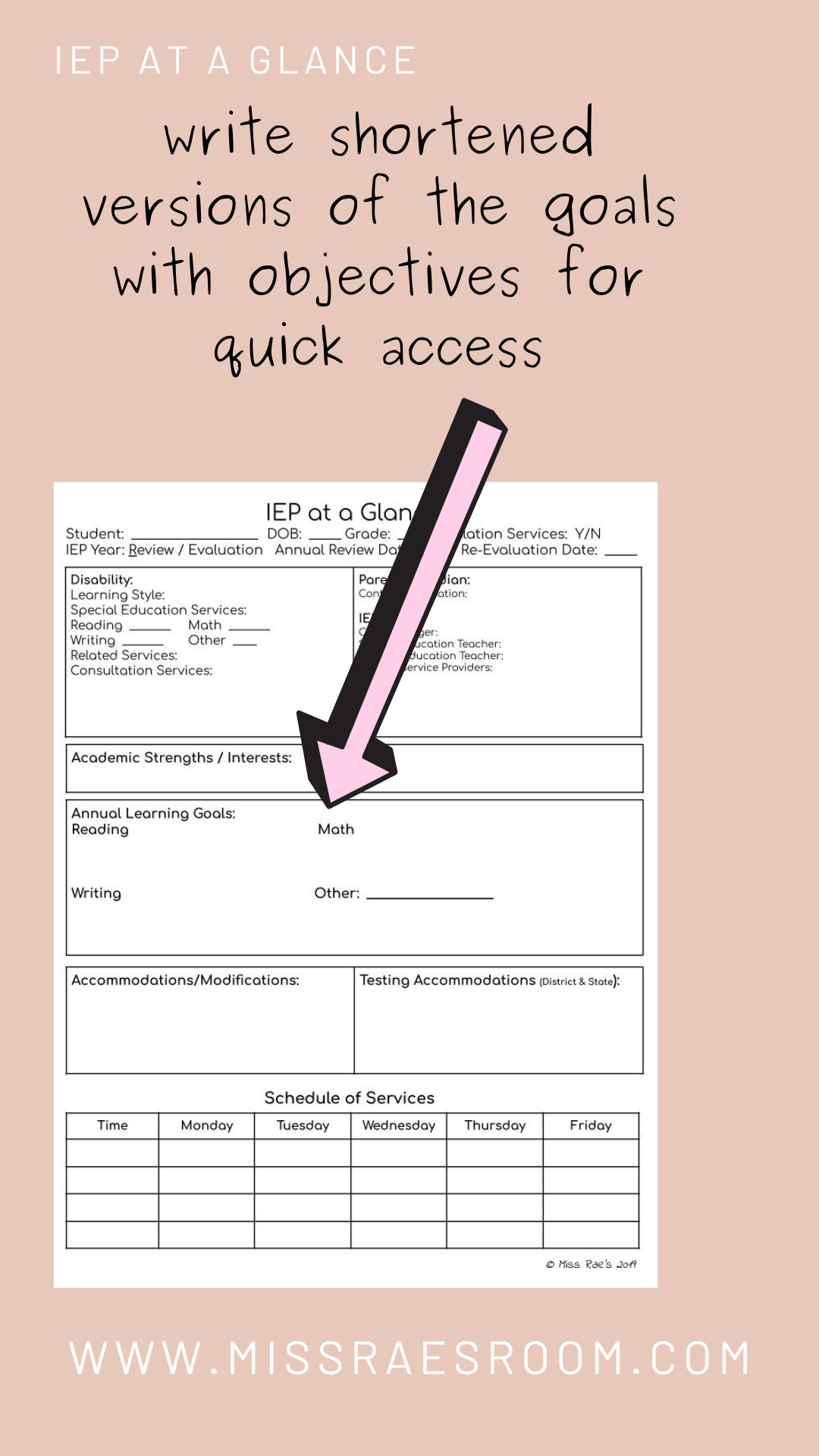
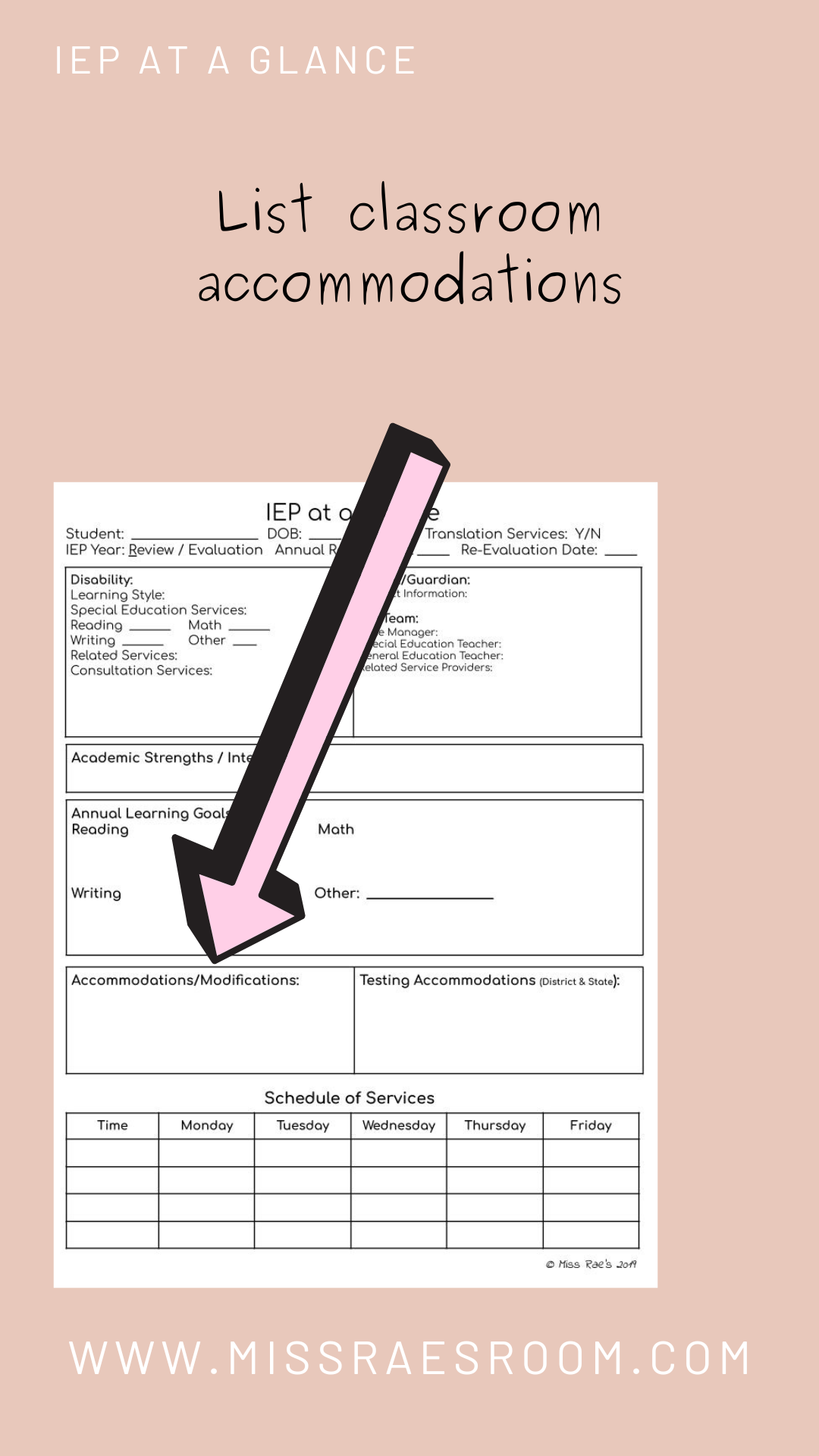
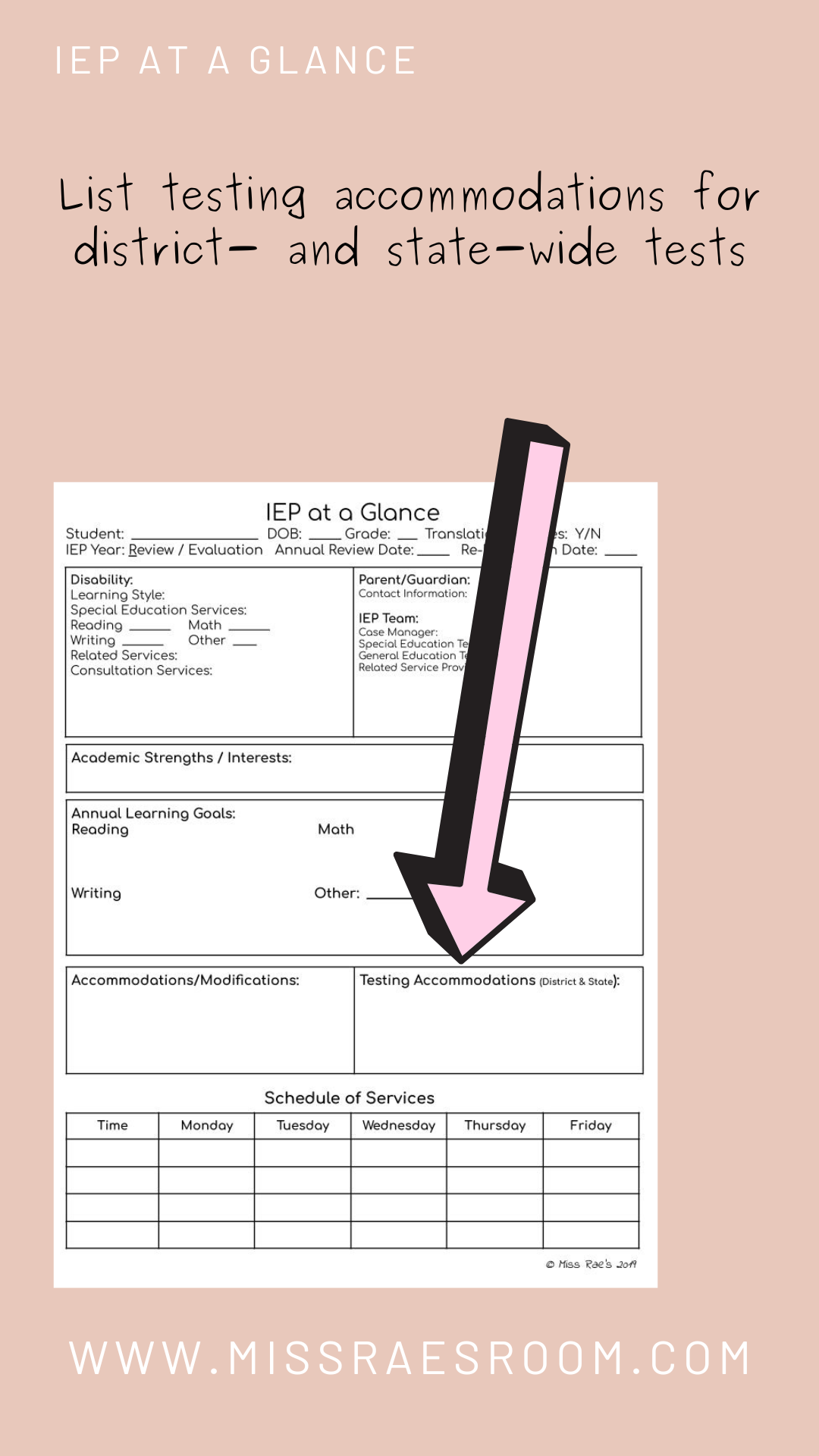
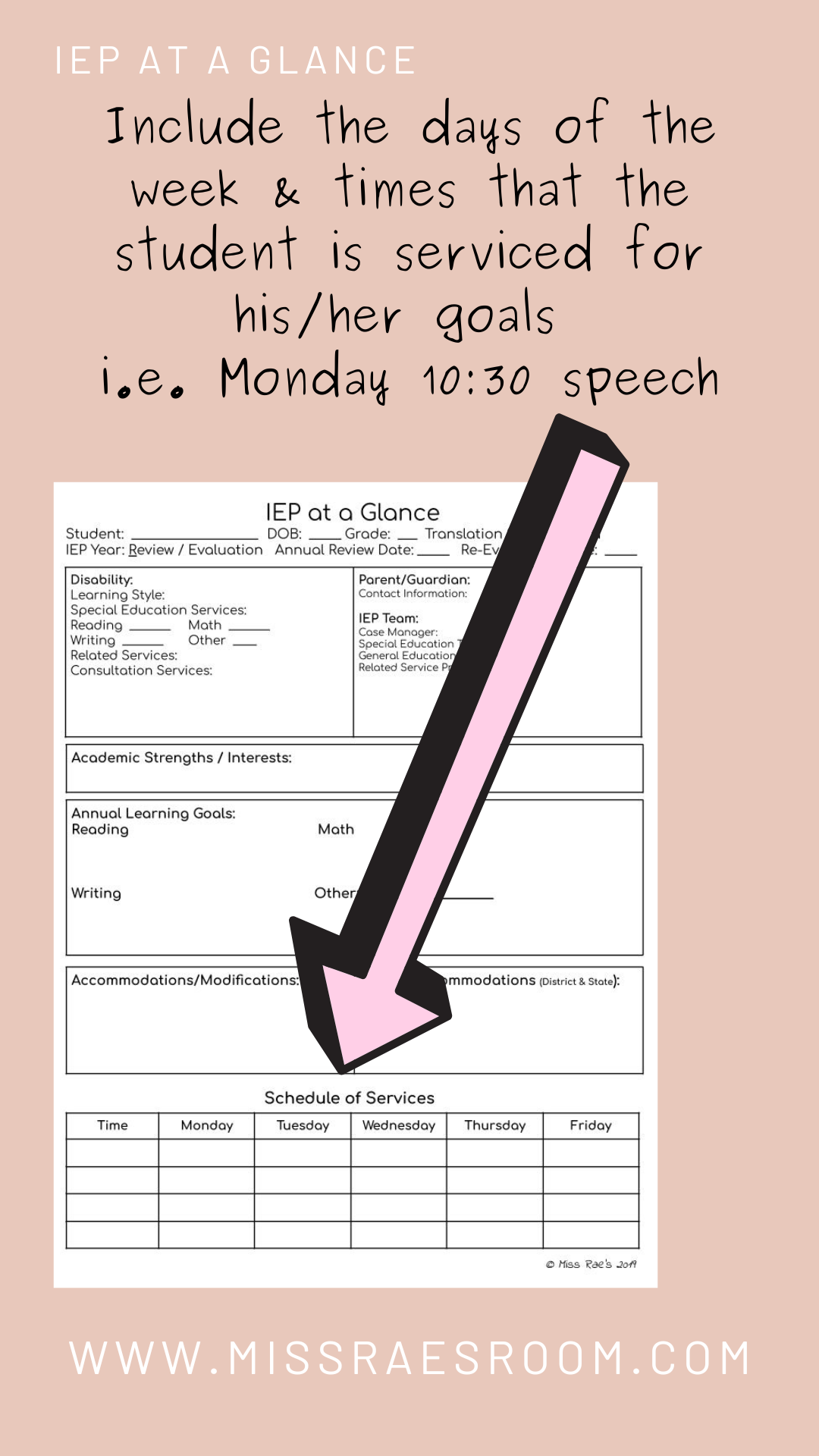
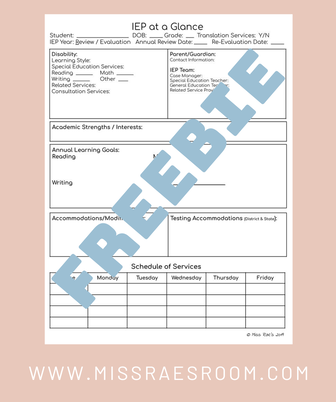
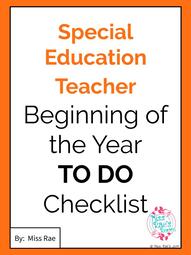

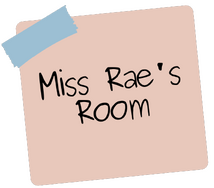
 RSS Feed
RSS Feed